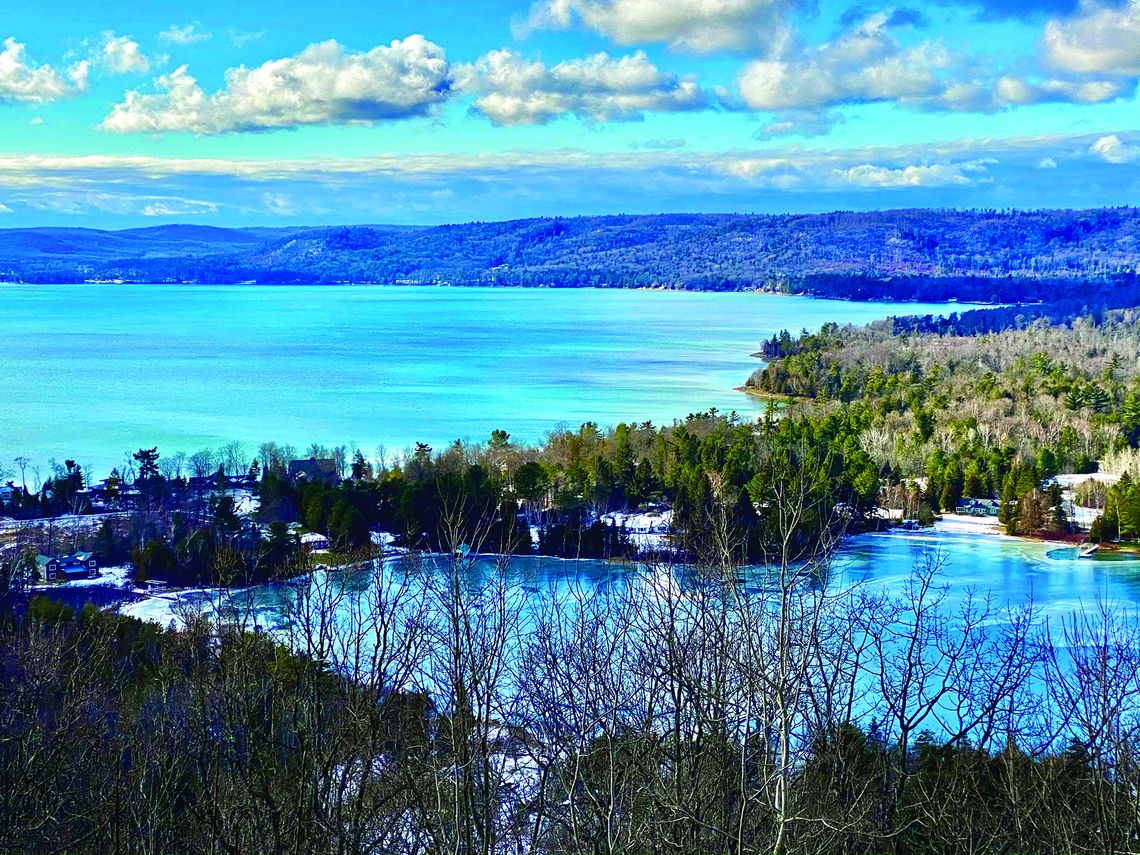Sleeping Bear Dunes National Lakeshore is busting at its seams following its latest acquisition, two Miller Hill parcels that would have been seen for miles had they been developed.
The Lakeshore purchased the properties, which total 8.66 acres and required what is termed a “minor boundary adjustment,” for $685,000 from the Leelanau Conservancy.
That was a bargain for the federal government only made possible by the longgame approach taken by the Conservancy, which played a vital role in ensuring the parcels weren’t purchased by a third party with the intent on building up to four homes that would have been visible throughout the Glen Lake watershed.
To get an idea of the location of the parcels, envision standing at the Glen Lake Narrows bridge and looking toward Fisher Lake. Then turn your gaze upward a few degrees.
“A lot of people know where that property is already because there has been a well-worn social trail leading to it for years,” said Conservancy executive director Tom Nelson. “The views are absolutely breathtaking; jaw-dropping I would say.”
The project was four years in the making, required the former landowners to forego better offers, and left the Conservancy with ownership of a third parcel containing about five acres. Including the last parcel in the Lakeshore deal would have put the total price over a $750,000 cap for property not within the park’s boundary.
The properties are a 10-15 minute walk from Miller Hill Road along national parkland.
All three parcels, which stretch from near the top of Miller Hill downward to Dunns Farm Road, share a border with the Lakeshore boundary that was established in a 1982 law expanding parkland to preserve the Miller Hill viewshed. The original boundary of the park as established in 1970 did not include Miller Hill.
Because the parcels share a border with the Lakeshore, their purchase was made possible through a federal law allowing for “minor boundary adjustments” that do not require an act of Congress.
However, a cap of $750,000 was established to buy lands requiring boundary changes. That kept an additional parcel of five acres out of the deal.
But the take-away news is that the Conservancy purchased all the properties through a land contract with the couple that previous owned the land, so the third piece will remain undeveloped and seamless in appearance with adjacent parkland. The cost to the Conservancy was about $1 million, Nelson said.
The National Park Service ended up with title to two parcels only through the nimble actions of the Conservancy. The Department of the Interior lacks the tools necessary to operate in a tight market for highly valued properties. NPS appraisals, which can’t be increased to meet competing offers, and other paperwork can require a year or longer to complete. With property values at the time increasing faster than market watchers could calculate, the Miller Hill parcels appeared destined for development.
“The landowners were very gracious and supportive of partnering with Sleeping Bear Dunes,” Nelson said. “They really liked the idea. We fanned out to talk to people in the community who we believe have a passion for what we’re trying to protect. We were clear right out of the state, saying the bulk of the property would be transferred to the park. People were very supportive.
“The park has become a beloved asset to the community.”
It was the first time Lakeshore superintendent Scott Tucker, who has been here since 2015, worked with the Conservancy to expand parkland. But there was history between the two entities, as the Conservancy in 2005 arranged for the eventual park purchase of property along the Crystal River.
Sixty parcels within the Lakeshore boundaries are owned by private landowners. The NPS is interested in purchasing them although it’s hampered by the process required to gain title.
“We’ve secured a property here and there since I’ve been here. We are still actively pursuing land acquisition from willing sellers. Now we can’t keep up with the going market rates … and there is no wiggle room,” Tucker said.








